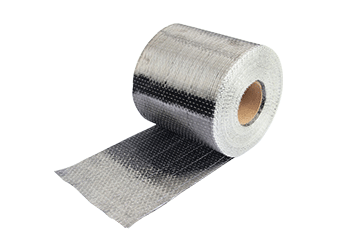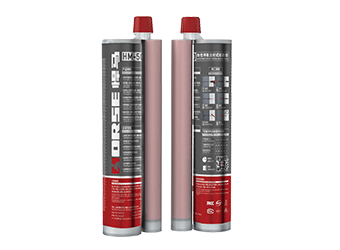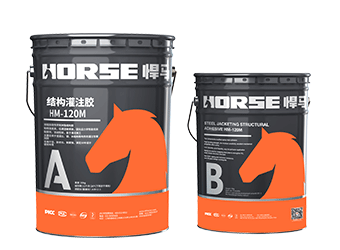Soluciones
La gama de negocios de construcción de caballos se extiende a todo el mundo y sirve a miles de clientes con productos, orientación técnica especializada en construcción, y somos testigos del reinicio de la marca china con ellos.
In addition to the reasons for the poor column quality caused by the above mentioned construction, in practical engineering, the loading capacity of reinforced concrete columns is often insufficient because of poor design and disaster (earthquake, fire, flood), or the increase of the load to the column due to the change of the structure's function. When these conditions occur, strengthening reinforced concrete columns is need .
1. Honeycomb and hole
1.1 causes
Improper mix ratio of concrete, stones and cement materials are not properly measured, resulting in less mortar and more stones.
Potassium concrete has a short mixing time and poor compatibility.
When pouring concrete, there is no layered pouring and improper blanking, which leads to concrete segregation.
The gaps in the gluing formwork are unblocked and the water and mud flow away.
1.2 prevention and control measures
The proportion of materials should be strictly controlled and checked regularly to ensure the accuracy of material measurement.
The mixing time should be suitable, and the mixing ratio should be strictly implemented.
When the height of concrete is too high, appropriate measures should be taken to discharge the material.
In order to prevent grouting leakage, double sided tape is used to seal the cracks around the bottom of the column mould.
In pouring, the bottom of the column shall be filled with cement mortar of the same grade of column concrete with a thickness of about 50mm to 100mm.
Ensure that no segregation occurs during concrete pouring and that the height of free fall of concrete should not exceed 2m.
Using cement slurry of 1:2 or 1:2.5 to smooth and firm after cleaning the tool.For larger honeycomb or hole, the granules in the weak and loose parts of honeycomb should be chipped away. After washing and brushing, the fine stone concrete with a higher grade than the original should be used for pouring and compacting, and the maintenance should be strengthened.
2.Gluten
2.1 cause
When pouring concrete, the steel protection layer pad is shifted or too little or leakage, so that the steel bar is exposed to the template.
Improper mix proportion of concrete will result in a break, depending on the lack of slurry or slurry in the formwork.
The structural members are small in section, too dense in steel bars, and stuck in steel bars, so that cement mortar can not be filled with steel bars, resulting in exposed reinforcement.
The concrete protective layer is too small or the concrete vibration of the protective layer is not solid; or the vibrator sticks to the steel bar or trample the steel bar, so that the steel bar displacement will cause the exposed reinforcement.
If the wooden mould wrench is not watered and moistened, it will be too early for water absorption, bonding or demoulding.
2.2 prevention and control measures
When pouring concrete, attention should be paid to checking and adjusting the thickness of reinforcement and protective layer.
When the steel bar is dense, we should use the stone with suitable diameter to ensure the accuracy and flexibility of the concrete mix.
Concrete vibration shall not be allowed to impact steel bars, try to avoid trampling steel bars, and straighten straightening straightening, such as bending.
The formwork should be fully moist and seriously blocked the gap.
When the surface of the surface is scrubbed and scrubbed, 1: 2 or 1: 2.5 cement mortar is smeared on the surface, and the exposed area is leveled; the exposed reinforcement is deep, and the weak concrete and the projecting particles are chiseled to be washed and compacted with the fine stone concrete higher than the original one.
3.Pitting and missing angle
3.1 cause
The template was not painted or painted with an uneven isolating agent.
The wood formwork is not fully watered or wet enough, the concrete is not well cured after the concrete pouring, resulting in dehydration, low strength, or the water swelling of the template to crack the edge angle, and the angle is sticky when the mold is dismantled.
The concrete is not vibrated.
When the mold is broken, the edges and corners are hit by heavy objects or external forces, or the protection is not good. The edges and corners are knocked off.
3.2 prevention and control measures
the template should be brushed with isolating agent, and should be adequately wetted before pouring concrete.
When demolishing the column template, the concrete also has enough strength; when the mold is removed, protect the edges and corners and avoid excessive force.
The concrete must be layered and evenly vibrated according to the operation rules to prevent leakage.
After wetting, it can be smoothed with cement mortar or cement mortar with raw mixture ratio after watering, and the angle off angle can be cut off by loose particles at the angle of missing angle. After fully wetting, the degree of visual loss is mended with 1: 2 or 1: 2.5 cement mortar.
4.Low strength and poor homogeneity
4.1 cause
changing the mix proportion of concrete at will, large water cement ratio and large slump.
Not enough agitation;
unevenly vibrating;
Premature removal of mold, inadequate maintenance, early dehydration and loose surface.
4.2 prevention and control measures
To ensure the quality of raw materials for concrete, the incoming materials must be inspected and checked according to the quality standards, and the sampling re examination shall be conducted according to the regulations.
Strictly control concrete mix ratio, ensure accurate measurement, match ratio determined by test room and adjust construction mix ratio, control the amount of water adding and admixture admixture correctly.
Concrete should be fully and evenly mixed, concrete slump value can be smaller than that of beam and board concrete, and water reducing agent should be added to increase the workability of concrete and reduce water consumption.
The vibration should be uniform and dense, and the columns with smaller cross-sectional area and higher height should be provided with openings on the side of the column die, and be poured in sections.
When it is found that the strength of concrete is low, the actual strength of structural concrete can be measured by non breakable methods (such as springback method and ultrasonic method). If the concrete strength can not be met, the treatment scheme can be studied according to the safety degree of the actual strength and structure, and the corresponding reinforcement or reinforcement measures are taken.
5.At the top of the column, there are more mortar and fewer stones, and the surface is loose and cracked.
5.1 cause
The main reason is that the water cement ratio of concrete is large, slump is large, the speed of pouring and tamping is too fast, and water is not removed by stratification. When the top layer is not removed, the water is poured out and poured for two times.
5.2 prevention and control measures
Strictly controlling the mix proportion of concrete, requiring that the water cement ratio and slump should not be too large, so as to reduce the phenomenon of bleeding.
Adding water reducing agent, reducing water consumption, greatly improving the early or late strength of concrete, improving durability, reducing shrinkage and increasing the workability of concrete;
Properly arranging the order of concrete columns and slowing down the pouring speed of concrete properly. When the concrete is poured to the top of the column, the water and the surface of the concrete should be removed two times.
When pouring large columns, they should be poured in sections and cut down by layers, especially commercial concrete.
If the stone on the top of the concrete column is small and the surface is loose, the concrete and the outstanding aggregate particles can be chiseled out, and the water is washed clean and soaked with water, and then it is repaired with the fine stone concrete which is higher than the original mark and carefully maintained.
In addition to the reasons for the poor column quality caused by the above mentioned construction, in practical engineering, the loading capacity of reinforced concrete columns is often insufficient because of poor design and disaster (earthquake, fire, flood), or the increase of the load to the column due to the change of the structure's function. When these conditions occur, strengthening reinforced concrete columns is need .
There are many ways to strengthen the reinforced concrete(RC) columns, such as the reinforcement of the section and reinforcement of the RC columns; the reinforcement method of the four or two bakery steel in the concrete column; the carbon fiber reinforcement method for repairing the concrete structure by the fiber reinforced polymer(FRP) composite; the steel plate is used by the structural adhesive. Adhesive steel reinforcement method is attached to the surface of the building; the prestressed strut reinforcement method is used to reinforce the concrete column with the external prestressed steel braces; the local reinforcement method, which is caused by the fire or construction errors, and the combined reinforcement method which is combined with the above method, is carried out.
Puede encontrar cualquier cosa que necesite, confíe en probar estos productos y encontrará la gran diferencia después de eso.

Tejido de fibra de carbono unidireccional de alta resistencia para refuerzo de compuesto de polímero reforzado con fibra (FRP).

Resina de anclaje epoxi, paquete de cartucho doble. Se inyecta en los orificios con la pistola dispensadora para plantar barras.

Adhesivo de refuerzo estructural para revestimientos de acero.